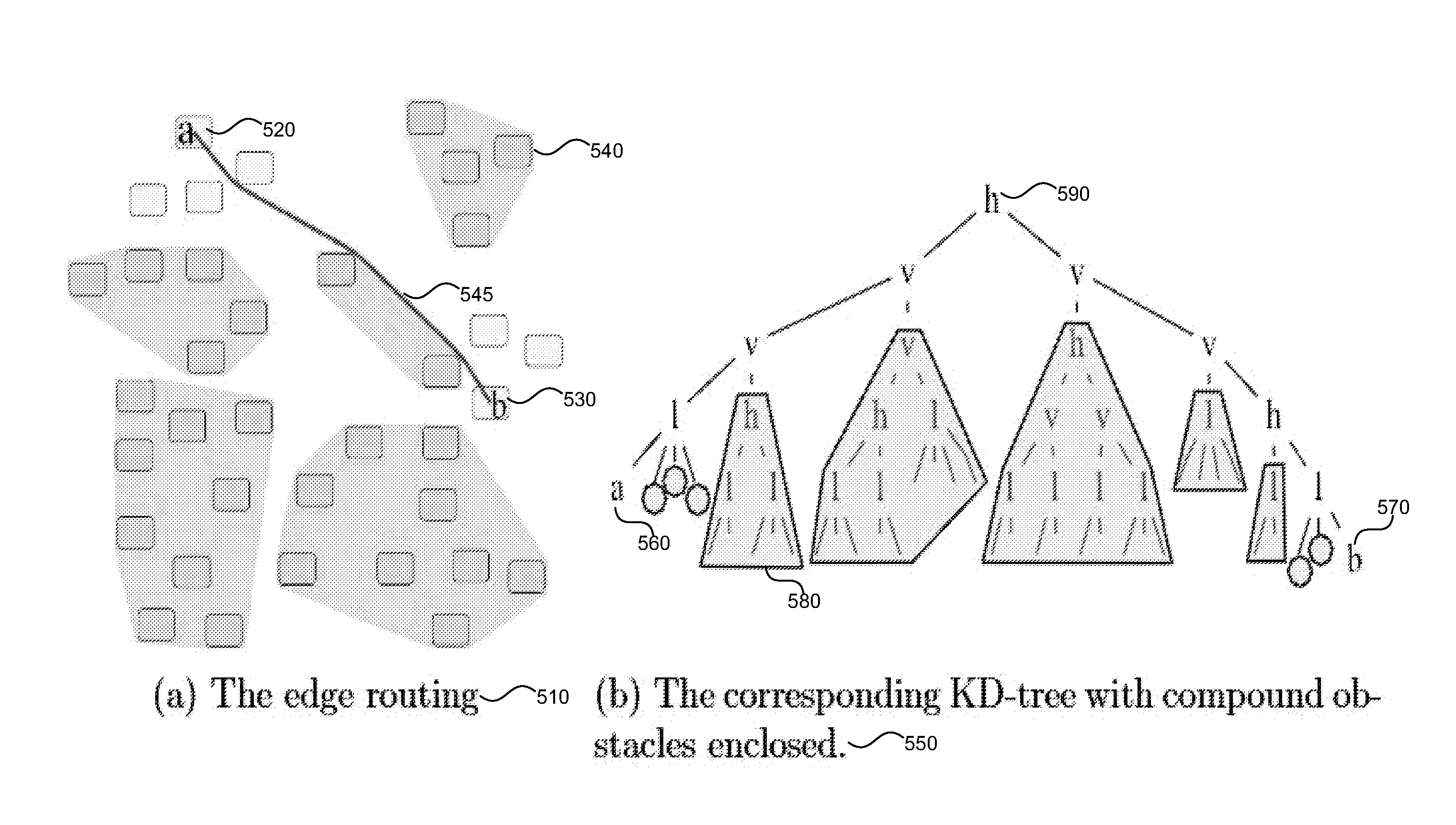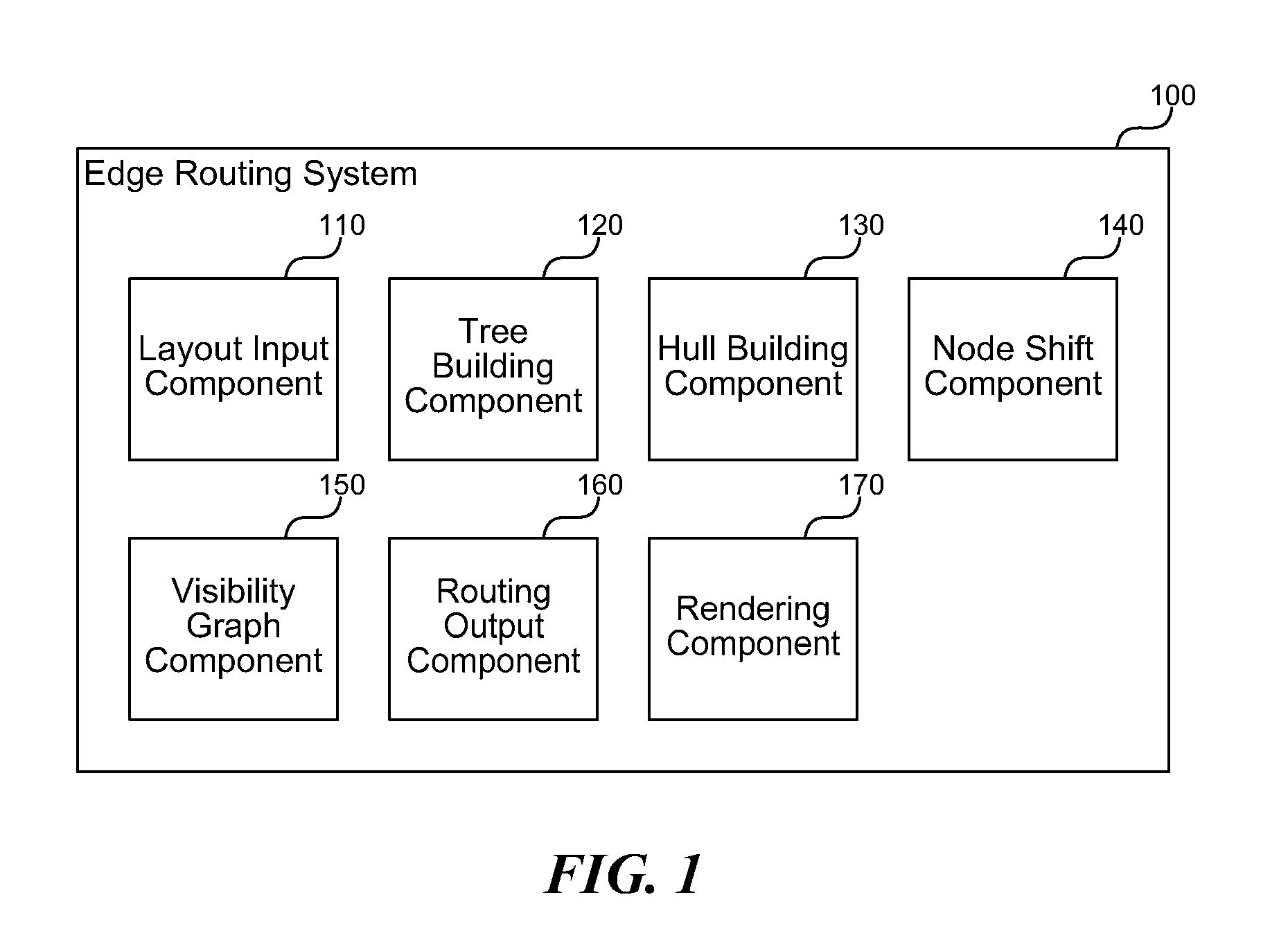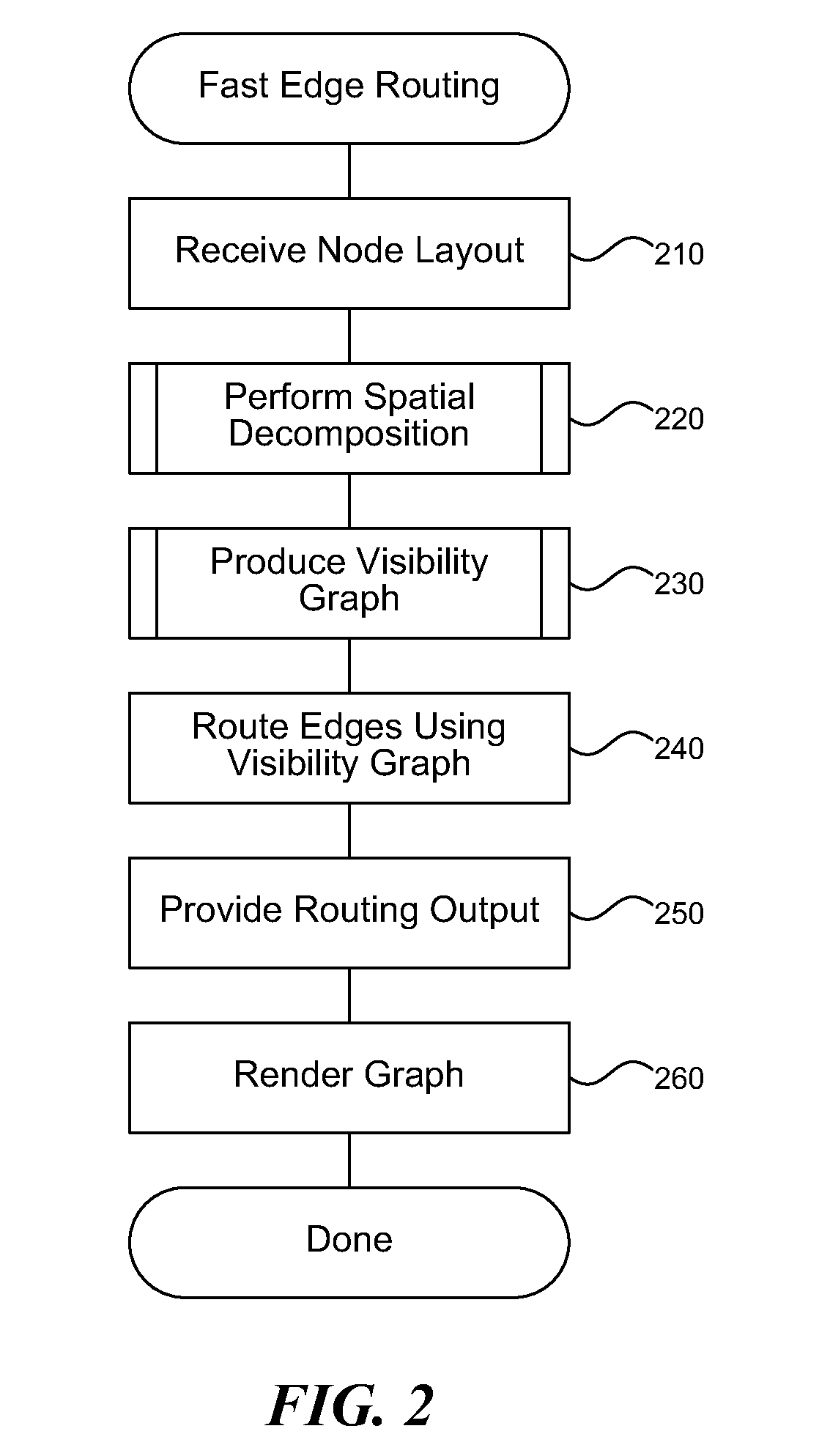Fast edge routing for interactive diagramming
a diagramming and interactive technology, applied in the field of fast edge routing for interactive diagramming, can solve the problems of inability to construct the full tangent-visibility graph, inability to scale, and inability to solve quadratic (in the number of nodes) routing schemes, etc., to achieve fast routing, more scalable and interactive edge, and quick generation of sparse visibility graphs
- Summary
- Abstract
- Description
- Claims
- Application Information
AI Technical Summary
Benefits of technology
Problems solved by technology
Method used
Image
Examples
Embodiment Construction
>FIG. 6 illustrates edges created by one sweep during cone spanning, in one embodiment.
[0012]FIG. 7 illustrates types of sweepline events in further detail, in one embodiment.
[0013]FIG. 8 illustrates cone closure events and missing broken sides, in one embodiment.
DETAILED DESCRIPTION
[0014]An edge routing system is described herein that uses a spatial decomposition to achieve faster routing, and more quickly generates a sparse visibility graph using a cone spanner. The system provides two approaches that can be used separately or in combination to achieve faster—and hence more scalable and more interactive—edge routing using approximate shortest paths. The first approach uses a spatial decomposition of the nodes in a graph, moving them slightly to obtain strictly disjoint convex hulls around groups of nodes, and then computing visibility graphs over these composite hulls rather than individual nodes. The second approach generates a sparse visibility-graph spanner to accelerate the pr...
PUM
 Login to View More
Login to View More Abstract
Description
Claims
Application Information
 Login to View More
Login to View More - R&D
- Intellectual Property
- Life Sciences
- Materials
- Tech Scout
- Unparalleled Data Quality
- Higher Quality Content
- 60% Fewer Hallucinations
Browse by: Latest US Patents, China's latest patents, Technical Efficacy Thesaurus, Application Domain, Technology Topic, Popular Technical Reports.
© 2025 PatSnap. All rights reserved.Legal|Privacy policy|Modern Slavery Act Transparency Statement|Sitemap|About US| Contact US: help@patsnap.com



